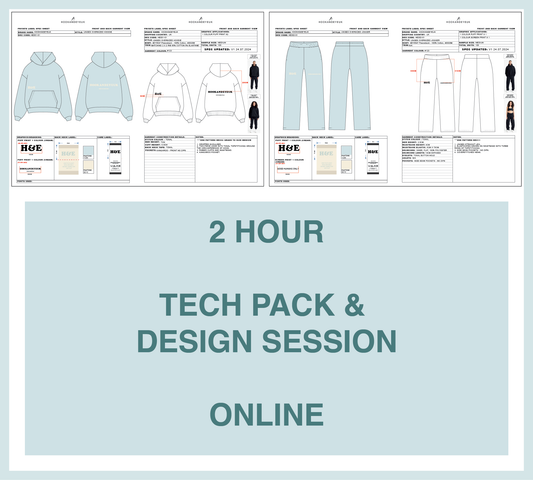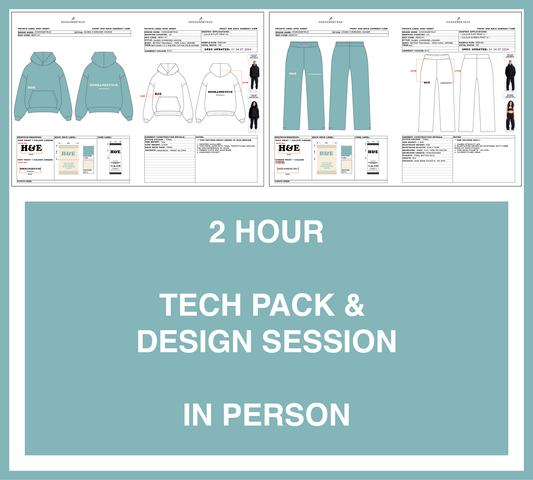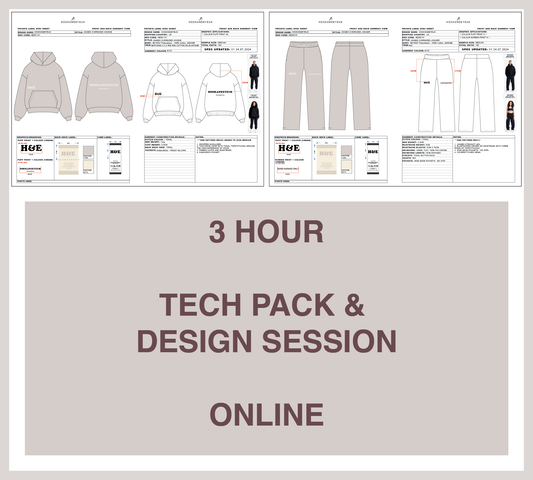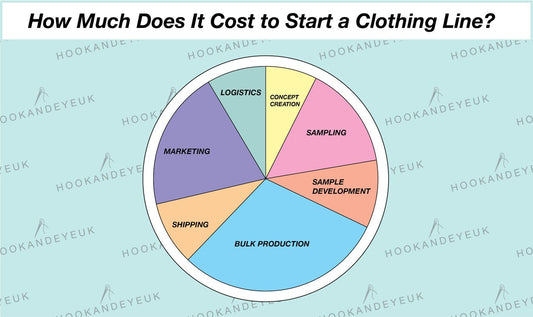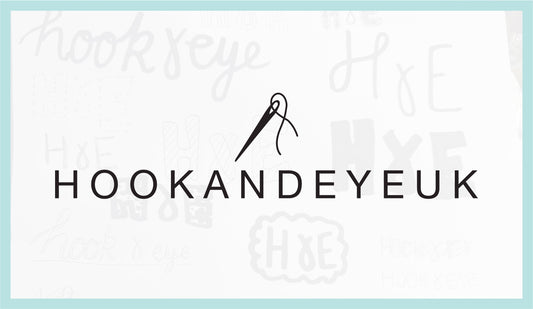Fabrics are tricky to get right from the get go! Here's an explanation of how to choose the right fabrics for your clothing brand!
If you're starting a fashion brand, at some stage you're going to have to choose fabrics for your clothes. It can be a minefield with so many options to choose from...
Here's our ultimate guide to everything you need to know about fabrics and how to easily pick the best ones to compliment your designs.
Where to start with choosing fabrics
Ever wondered...'what fabric do I use for my clothing designs'?
The rules of fabrics are pretty simple. If your item is tight then your fabric needs to be able to stretch so look for words like 'Spandex' or 'Elastane'. If you're designing for garments like hoodies or joggers that don't need stretch then look for words like "Fleeceback' or 'Loopback'. A stretch hoodie fabric would use a combination. Take a look at our fabrics pages for an easy understanding.

Using stock fabrics
A good manufacturer will always have their own 'standard' or 'stock' fabrics.
These should always be your go-to whenever you're thinking of a making a new design.
These fabrics have usually been tested the most and have the highest quality standards. Clothing manufacturers want orders to be as smooth as possible, so they make sure that their stock fabrics are the best quality, as they don't want to have to deal with returns! If you're curious to see what we can offer, you can take a peek at our range of stock fabrics here.
Swatch Cards
You may have noticed that clothing manufacturers don't tend to hand out fabric swatch cards easily (you know, the ones with samples of all their fabrics).
Why is that?
There is an unfortunate but obvious answer to this. They are really costly to make and precious to come by. Fabric manufacturing companies want to sell their fabrics in large amounts directly to clothing manufacturers as it's the easiest and biggest volume business for them.
So if you want to touch and feel a fabric before placing an order, the best way is to ask your clothing manufacturer for individual swatches instead. They will be happy to send them to you in the post (or at least our lovely team at Hook and Eye UK are happy to do that for you - see below!).

Trialling different fabrics
Once you've had a look at some swatches and have an idea of the fabrics you'd like to use, a really good tip is to get a sample design made using those different fabrics (before you go to bulk manufacture). That's the best way to really test how each fabric type will look and feel in real life.

Get your fabric names right!
Why can't I just send the composition of the fabric I want to my manufacturer??
This is because the composition could mean anything! If you said you wanted green paint and told the artist you wanted 67% yellow and 33% blue but you had no idea what the base yellow or blue colour started as then you'd have no idea how the final green would turn out. It's the same with fabrics. You are always better to know the specific fabric name that you want for your clothes. That will avoid unpleasant surprises when your clothes come back from the manufacturer.
If you look at the example image below you will see there are two fabrics with the exact same composition but the specific fabric name 'stretch cotton pique' is used to make polo necks and the specific fabric name 'cotton elastane' is used in garments such as leggings and cycling shorts.

Eco-friendly fabrics
We all know that Eco-friendly fabrics are what's hot in the fabric world right now! Lots of manufactures have to use the term 'Eco-friendly', rather than 'organic', as the term 'organic fabric' has a full definition and it's so difficult to get the accreditation for. To be able to call a fabric organic, even the soil the cotton is grown in has to be free from pesticide use for several years!

The infrastructure for truly organic fabrics is not fully in place yet and it will take the industry a while to catch up. That said, the more we use eco-friendly fabric, the more demand it will create and the more available and cost effective organic fabrics will become. So if you want to help the industry move towards a greener future, it's definitely worth asking your manufacturer about their eco-friendly fabric availability.
We have both 'organic certified' and 'eco-friendly' fabrics available. Get in touch with us if you'd like to talk through the pros and cons of each.
Conclusion: Choosing the right fabrics
In conclusion, always try to use the manufacturer's standard fabrics in your designs wherever you can, as they are usually the best quality.
Always sample in as many fabrics as you can so that you can get a good idea of what you do and don't like. Also, keep in mind that compositions are not the key to everything as they do not unlock the exact fabrics!
If you're looking to start a fashion brand, or want to add new designs to your fashion label, we can help you find the perfect fabrics. In our tech pack and design sessions we always talk you through all possible fabric options to give you the best possible guidance for your designs!
Sound good? Book a session with us - we promise you won't regret it.



